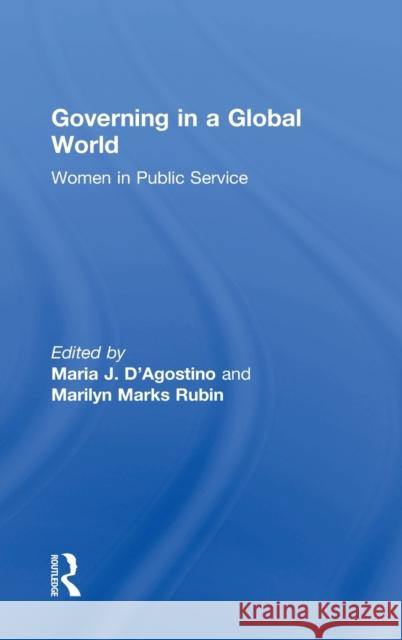Governing in a Global World: Women in Public Service » książka
Governing in a Global World: Women in Public Service
ISBN-13: 9781138925632 / Angielski / Twarda / 2017 / 270 str.
Governing in a Global World: Women in Public Service
ISBN-13: 9781138925632 / Angielski / Twarda / 2017 / 270 str.
(netto: 715,64 VAT: 5%)
Najniższa cena z 30 dni: 705,23
ok. 22 dni roboczych
Bez gwarancji dostawy przed świętami
Darmowa dostawa!
Governments around the globe are grappling with increasingly complex, systemic issues that result from the tentacles of globalization, interconnected economies, increasing inequality, urbanization, demographic shifts, threats of global pandemics and climate change. While it is generally recognized that diversity in experience and thinking contributes to innovations in addressing these and related issues, it is also generally recognized that there is still a long road to travel before leadership in public service represents the diverse societies in which governments and non-profit organizations operate and serve. Out of the close to 200 nation-states, about 25 percent have ever been governed by a woman at the helm. As a result of this gender gap, it is obvious that women are not fully participating in government decisions that affect their lives and livelihoods and nations are not capitalizing on the potential of more than half their citizens. The importance of advancing women's leadership in the public service has continued to gain traction, particularly women's participation in the political arena and the status of women in political leadership positions. The same level of attention has not, however, been given to the role and impact of women's participation at lower levels in the public service. A critical mass of women in public administration, especially in senior decision-making positions, is important not only for equity reasons but also because it brings diversity in perspectives to policy and other discussions. Given the increasingly interconnected world, a transnational conversation on women in public administration is needed to address these and other issues faced by women who pursue public purposes-- purposes that cross borders and whose impact is not confined in scope. This handbook will survey the status of women in public administration in the U.S. and in other regions and countries across the globe with a specific focus on best practices, challenges and obstacles. Special attention will also be given to programs and policies that facilitate versus constrain involvement and that contribute to the progress of women in public service, worldwide. The comprehensive examination of women's participation in public administration provided by this handbook will contribute to an understanding of the evolution of the role of women in public administration, the current status of, and challenges to, their participation worldwide and the steps taken and that still need to be taken to move forward.











